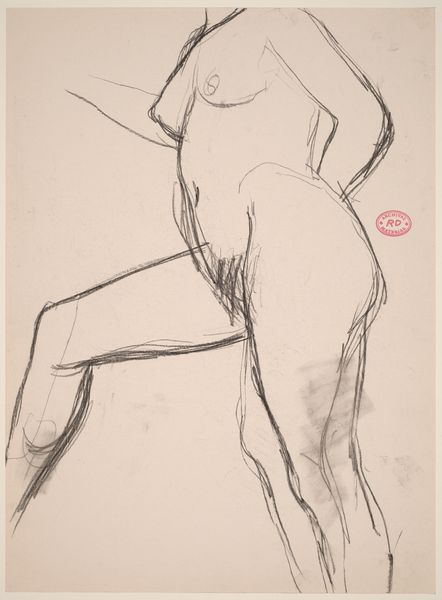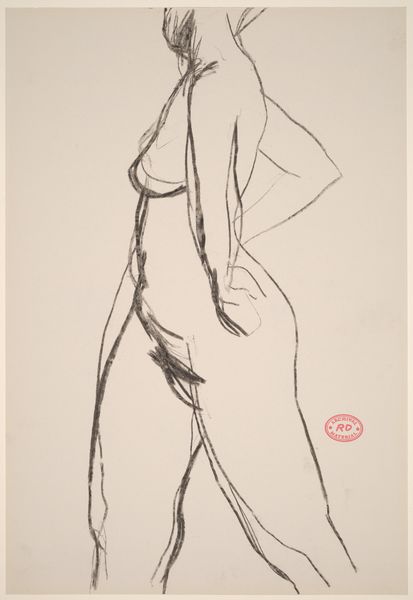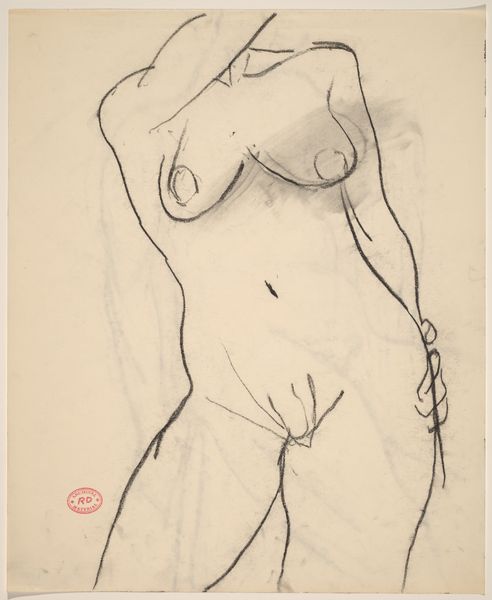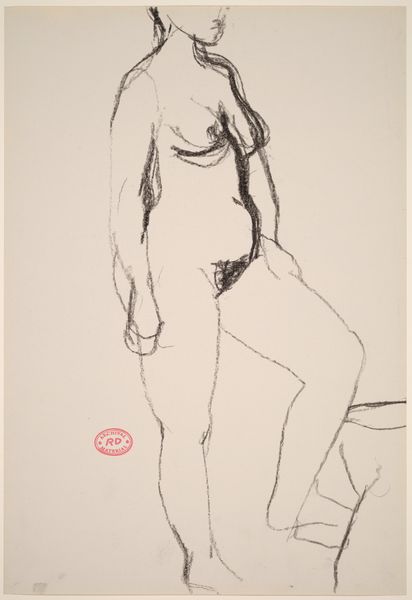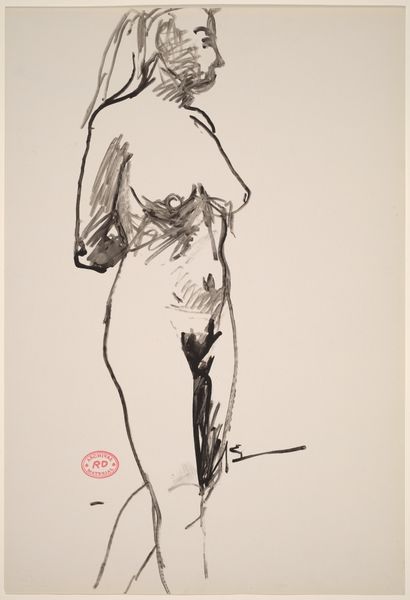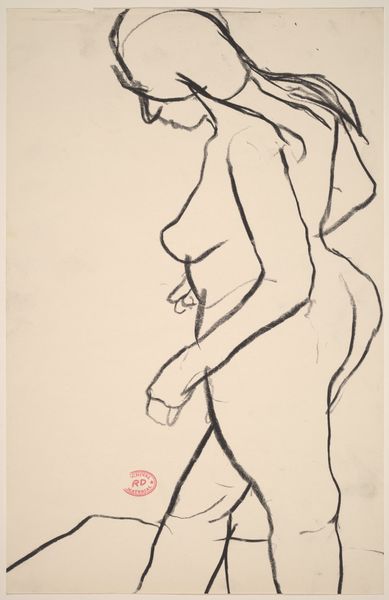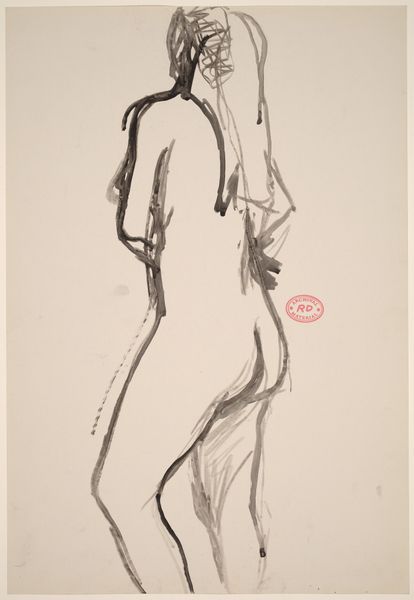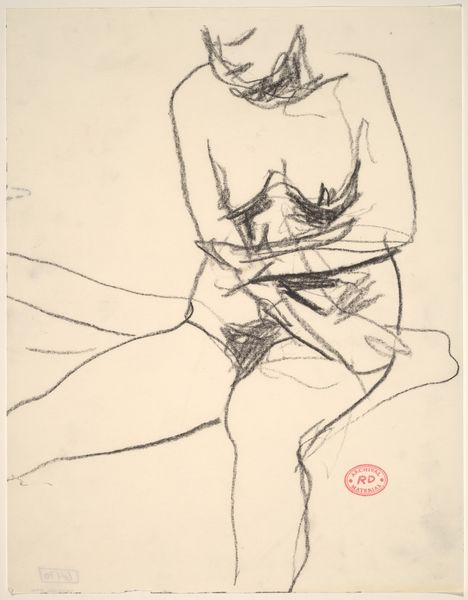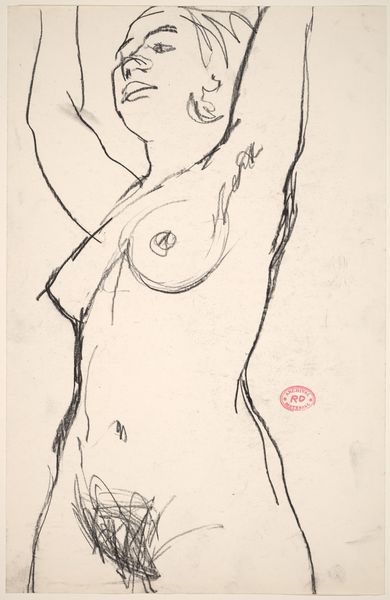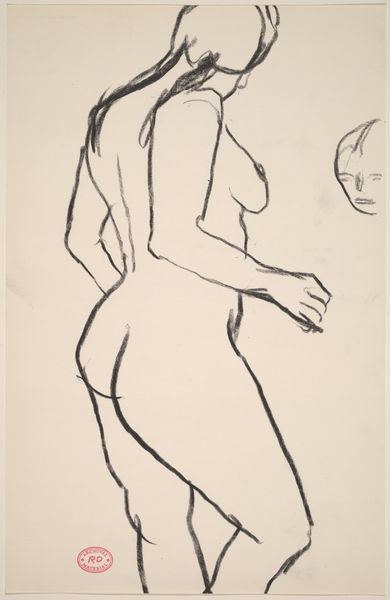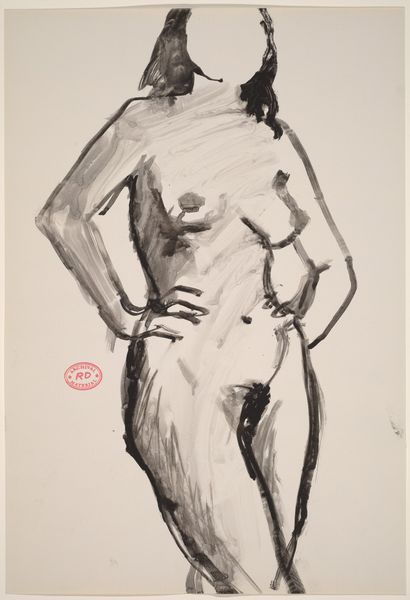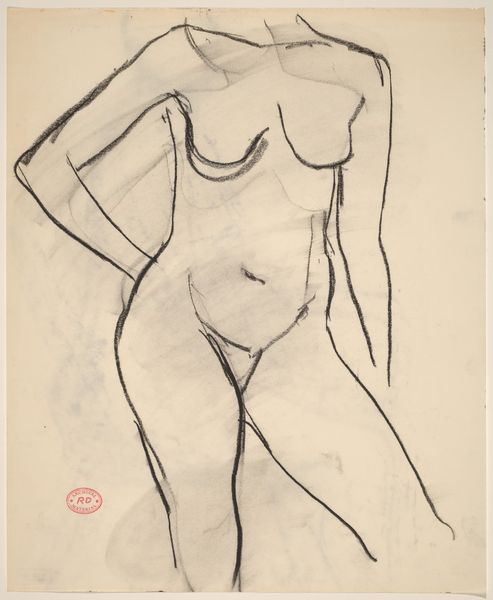![Untitled [standing female nude with arms stretched back] by Richard Diebenkorn](/_next/image?url=https%3A%2F%2Fd2w8kbdekdi1gv.cloudfront.net%2FeyJidWNrZXQiOiAiYXJ0ZXJhLWltYWdlcy1idWNrZXQiLCAia2V5IjogImFydHdvcmtzLzlhZTYzODg2LTEyZTQtNDA4Mi1hZTVjLTMwN2E0ZDNlOTJhYS85YWU2Mzg4Ni0xMmU0LTQwODItYWU1Yy0zMDdhNGQzZTkyYWFfZnVsbC5qcGciLCAiZWRpdHMiOiB7InJlc2l6ZSI6IHsid2lkdGgiOiAxOTIwLCAiaGVpZ2h0IjogMTkyMCwgImZpdCI6ICJpbnNpZGUifX19&w=3840&q=75)
Untitled [standing female nude with arms stretched back] 1955 - 1967
0:00
0:00
drawing, ink
#
drawing
#
ink drawing
#
pen sketch
#
figuration
#
bay-area-figurative-movement
#
ink
#
nude
Dimensions: sheet: 43.2 x 27.6 cm (17 x 10 7/8 in.)
Copyright: National Gallery of Art: CC0 1.0
Curator: At first glance, there's a captivating vulnerability to this piece. The figure, sketched in ink, appears caught mid-motion, a pose that evokes a sense of raw honesty. Editor: Indeed. Let's consider "Untitled [standing female nude with arms stretched back]" created by Richard Diebenkorn between 1955 and 1967. What's most striking is the stark simplicity of the lines. There's an undeniable energy, isn't there, conveyed purely through the economy of marks? Curator: Precisely. It feels almost primal. Nudes, across millennia, are rarely just bodies; they are often repositories of cultural memory, encoding societal ideals about beauty, sexuality, and the feminine form. Diebenkorn strips away idealization, offering us instead an unadorned view of the human figure. Editor: And the application of ink reinforces this immediacy. The strokes aren't hesitant; they possess a calligraphic confidence. Notice the variation in line weight. Some are bold, defining the contours, while others are thinner, suggesting shadow and depth. Curator: I wonder, what cultural scripts were being challenged or affirmed in post-war America through such depictions of the female nude? This isn’t a Venus; this feels like someone caught unawares, her gesture almost desperate. Editor: You intuit a certain anxiety in her pose. I agree, but formal composition plays with that tension, look how Diebenkorn positions the body against almost scribbled backdrop to create the illusion of form while emphasizing the spatial depth around the body. Curator: Ultimately, what makes this sketch so resonant, is its blend of timeless archetypes of human figures mixed with mid-century sensibility and bold abstraction. The figure becomes more than just a representation of flesh; it embodies the struggles and beauty of existence. Editor: I agree, through a formalist reading that emphasizes abstraction and form, combined with psychological analysis, we gain a holistic appreciation for this very human expression.
Comments
No comments
Be the first to comment and join the conversation on the ultimate creative platform.
